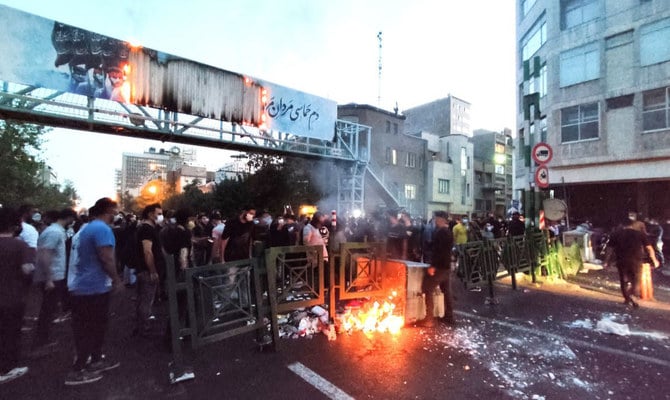
- ARAB NEWS
- 01 Jul 2025

In the last 43 years — since a popular uprising toppled the authoritarian rule of the shah in 1979 — Iranians have known only two supreme rulers: Ayatollah Khomeini and Ali Khamenei. Under Iran’s complex system of government, the supreme leader holds real power and his will supersedes that of the president and the legislature. This is the so-called Vilayat-e Faqih, or guardianship of the jurist. While Iran is a republic, in reality it is a theocracy in which the clerics impose their way of life on the people.
In a nutshell, this is the real driver of Iran’s ongoing anti-regime protests, which were triggered by the Sept. 16 death of 22-year-old Mahsa Amini while in the custody of the morality police. Iranians are fed up with the autocratic, self-centered rule of 83-year-old Khamenei and those around him.
What started as a backlash over the tragic death of Amini by mostly young Iranian women is now a potent nationwide uprising that shows no sign of subsiding. The reaction of the regime has been as expected: Using brute force against peaceful protesters. According to Iranian human rights activists, more than 400 protesters have been killed since the demonstrations broke out, including 60 children. Thousands more have been arrested and a few have been tried and sentenced to death.
The uprising has spread to minority regions such as Sistan and Balochistan in the southeast and Iranian Kurdistan in the northwest. Minorities in these provinces have long been marginalized and suffer from discrimination. But the protests have also spread to key cities, including the capital Tehran. This time, the protesters are not calling for reforms, as they did in the 2009-10 election protests dubbed the Green Movement. They now want regime change and are openly attacking Khamenei and his dictatorial rule.
The regime has seen regular protests erupt in the past few years, mostly over worsening living conditions. Using force to stamp out such protests has worked well in the past, but not this time. Students, professors, artists, truck drivers and even workers in the oil industry have waged strikes in solidarity with the protesters.
Having failed to crush the protests, the regime accused the West and Israel of plotting against the country. Khamenei himself called the protesters “ignorant” and “a bunch of mercenaries.” He too blames the West, saying that the enemy “hopes to turn the people against the country by psychological means, through the internet, money and the mobilization of mercenaries.” When it comes to victims, Khamenei only mentions those killed from the Basij, a militant arm of the Islamic Revolutionary Guard Corps, who have been sent to terrorize and hunt down the protesters.
The fact is that this is a popular grassroots movement that has nothing to do with the West plotting against the regime. The regime’s real problem is with its own people, especially the young, with 60 percent of the 80 million-plus population being below the age of 30. Like all youths, they want freedom, jobs and a decent living — something that the government has failed to deliver.
The hard-liners believe that concessions will only boost the protesters, who will then demand more.
Osama Al-Sharif
In a bid to find a peaceful way out, some key figures in the regime are suggesting that dialogue be initiated with reformists. The name of former President Mohammed Khatami has been mentioned, among others. Leading such efforts is Supreme National Security Council Secretary Gen. Ali Shamkhani. But it is unlikely that Khamenei and the hard-liners around him will sanction such dialogue. It is not in the nature of the supreme leader to make concessions. The hard-liners believe that concessions will only boost the protesters, who will then demand more.
But even with internet censorship and a media blackout, young Iranians are leaking footage of night protests that have reached the heart of the capital. It is clear that force will not end the uprising unless the regime resorts to mass killings. Decades of iron-fist rule have emboldened the regime, which has isolated and banished even the most moderate and loyal of the so-called reformists.
And when the niece of the supreme leader, Farideh Moradkhani, posts a video following her arrest in which she calls the government a “murderous and child-killing regime” and expresses support for the anti-government protests, one can appreciate the level of frustration and anger that is felt by the nation’s youth. It also underlines the fact that the regime has become so detached from the people.
Still, that does not mean that the clerical institution that rules the country is about to fall. What is most likely to happen is that Khamenei will continue to be in denial that there is a problem and will continue to ignore the advice of the likes of Shamkhani to talk to the reformists. For now, the regime’s only response will be to double down and unleash more force.
Twitter: @plato010